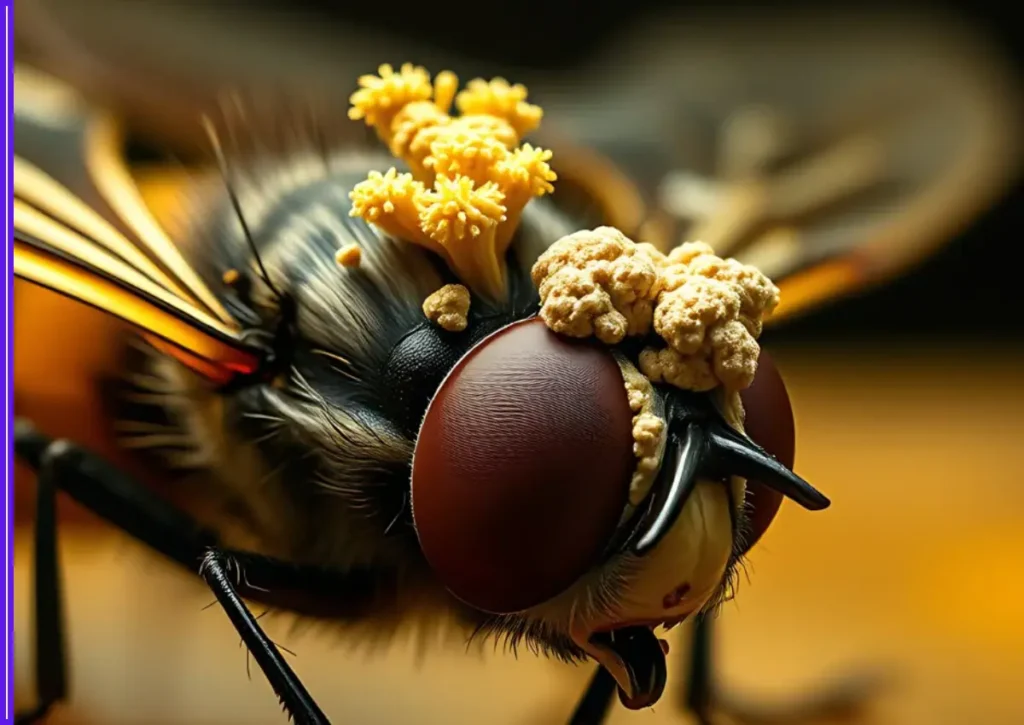In an extraordinary breakthrough, scientists have discovered a 99-million-year-old fly infected with a parasitic fungus, frozen in time within a piece of Burmese amber. The fossil shows one of the earliest and most chilling examples of nature’s mind-controlling parasites in action—millions of years before humans walked the Earth.

The ancient fly, along with a fossilized ant pupa, was found in northern Myanmar and is believed to date back to the mid-Cretaceous period, when dinosaurs still ruled the planet. Both insects were found to be infected by species of the Ophiocordyceps genus—a group of parasitic fungi known today for taking over the bodies of insects and turning them into so-called “zombies.”
What makes this discovery even more significant is the clarity with which the fungi can be seen growing out of the insects’ bodies. In the case of the fly, a fungal stalk appears to be erupting from its head, a signature trait of the zombifying process seen in modern-day Cordyceps fungi. The ant pupa, meanwhile, shows fungal growth near the metapleural gland—a rare and unusual site for infection, raising new questions about the ancient fungus’s behavior and evolution.
Researchers have named these new extinct fungal species Paleoophiocordyceps ironomyiae and Paleoophiocordyceps gerontoformicae. The names reflect their connection to modern zombie fungi but also their ancient origins. Scientists say these are the oldest direct fossil evidence of parasitic fungi manipulating insect hosts.
Dr. Yuhui Zhuang from Yunnan University, who led the research, was reportedly stunned when he first spotted the fungal growths while examining amber specimens. “This is something you dream of finding,” he said. “It proves these complex parasitic behaviors have existed far longer than we previously believed.”
This rare find sheds light on the ancient battle between insects and the organisms that preyed on them. Modern Ophiocordyceps fungi are well-known for infecting ants, flies, and other insects—taking control of their bodies, forcing them to climb to high places, and then killing them to release fungal spores from their corpses. The newly discovered fossils suggest similar strategies may have been used in the age of dinosaurs.
The discovery also connects paleontology and parasitology in a unique way, offering insights into how parasitic fungi may have shaped early ecosystems by keeping insect populations in check and influencing the evolution of both predator and prey.
Scientists believe this could be just the beginning. With more amber fossils being studied using advanced imaging techniques like micro-CT scanning, they hope to uncover even more evidence of prehistoric parasites—and perhaps even more ancient examples of nature’s most bizarre survival tactics.
In short, this fossilized “zombie fly” tells a haunting story: long before humans arrived, Earth was already home to creatures capable of hijacking minds and bodies, proving that some of the most terrifying survival strategies are truly ancient.









